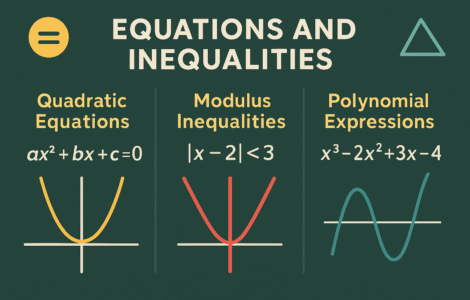
Equations and Inequalities
Free
About This Course
Learners will deepen their skills in solving various types of equations and inequalities, including polynomial, rational, and quadratic forms. The topic also covers solution sets and their representation on number lines or coordinate axes, preparing students for higher-level algebra and calculus.
Learning Outcomes:
By the end of this topic, learners should be able to:
- Use different methods of solving quadratic equations like, Factorisation, completing the square and quadratic formula.
- express roots as a sum and a product using coefficients of a quadratic equation, and formulate quadratic equations using new roots.
- Solve simultaneous equations that have; linear and non – linear terms, logarithms and equations reducing to quadratics.
- apply the method of completing squares to determine maximum and minimum values, e.g.
- maximum profits, minimum costs, represent the information graphically.
- verify the nature of roots of quadratic equations using the discriminant.
- Solve simultaneous equations in two variables using methods such as substitution, elimination and matrix operations.
- solve linear simultaneous equations in three variables using elimination, substitution, row reduction and echelon form.
- Represents linear inequalities on a number line and graphs of inequalities.
- Solve quadratic inequalities using graphical methods and algebraic techniques.
- formulate polynomials to identify the degree of a polynomial.
- perform long division of polynomials, factorise polynomials, solve equations of the form 𝑓(𝑥) = 0 where f(x) is a polynomial of degree three and above.
- deduce the remainder theorem to find the remainder when the divisor is linear or quadratic.
- determine the remainder when the polynomial is not known.
- find the quotient and remainder of a polynomial with repeated roots.
- deduce and use the factor theorem.
- Apply techniques to solve real-life problems involving equations and inequalities.





